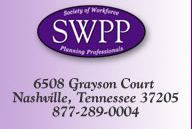s
 |
||
|
Question: I have been tasked with analyzing the impact of modifying our current service level target of 80/30 to 80/60. We utilized our WFM software’s budget calculator as well as created various staffing runs, always coming to the same results. The following are our assumptions/settings:
Using these assumptions/settings, and only changing the service level target, the net difference only came to 2-3 FTE reduction. We’ve validated our numbers/assumptions several times to ensure we were approaching this correctly. In the end, a 2-3 FTE impact on doubling our ASA target is not making sense to me….and more importantly my boss! I’ve struggled with this in the past and am looking to your expertise to help me answer the age-old question of: How many FTE can we save if we change our service level to “X”? Is there an alternate way to calculate this outside of our WFM tool, or is the approach we’ve used in line with the industry? Answer: The difference in FTE is affected by the scheduling efficiencies you are able to achieve in your current environment. If your “schedule inflex” is high, there may not be enough options in the scheduling to take advantage of the longer wait time. The process you have been using with your WFM software is correct from what I can tell and certainly the way most would do this analysis, but I did a bit of a test to see if I got something similar. I assumed 25,000 calls per week with 25% on the busiest day and 15% of that day on the busiest hour. Using 80/30, I found that 194 bodies in chairs are required in that one hour. For 80/60, it reduced to 191. When I reduced the percent in the busiest hour to 8%, I got 106 for 80/30 and it only reduced to 105 for 80/60. So the 2-3 FTE that you are saving is probably about right. While it seems like doubling the number of seconds of wait should have a bigger impact, it is largely the 80% that is driving the results I suspect. Since about 65% of the calls will be answered immediately and the rest spread out along an exponential curve, the number of calls answered between 30 and 60 seconds is not as many as you might think. However I am not suggesting that you lower the percentage to achieve the savings. Anything below 80% has so much variability in it that the service experienced by customers will be pretty inconsistent. This actually reinforces the Power of One concept. When just two are missing, the results will drop from 30 seconds to 60 even with a team of over 100 staff on the phones. Have a tough question? Send it to wizard@swpp.org and we’ll try to find an answer! Copyright ©2010 Society of Workforce Planning Professionals. All rights reserved.
|
||
